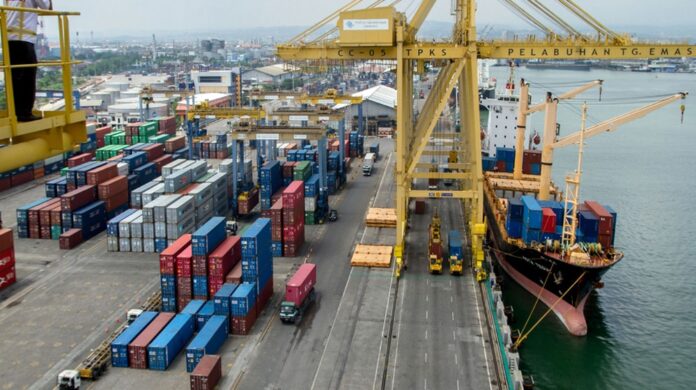Pakistan’s foreign trade has been seriously disrupted by the widespread lockdown as exports dropped 54 percent last month to below $1 billion, highlighting the need for more accommodating economic policies to revive the economy.
Pakistan Bureau of Statistics reported that the disruption also affected imports from Pakistan, which fell 34.5 percent to $3.1 billion in April over the same month last fiscal year, resulting in a nearly one-fifth reduction of the trade deficit to $2.1 billion.
Exports are dropping at a rapid pace compared to imports which have implications for the external sector of the country.
Overall, in the first 10 months (Jul-Apr) of the current fiscal year 2019-20, Pakistan reported a trade deficit of $19.5 billion, down 25.7 percent, or $6.73 billion from the same period last year.
According to the national data collection agency, overall exports decreased by 3.9 percent to $18.4 billion in Jul-Apr of the current fiscal year. In absolute terms, exports from July through April decreased by $752 million. Imports fell 16.5 percent to $37.9 billion over the span. Imports were contracting $7.5 billion in absolute terms, giving some relief to the government.
In April 2020, exports dropped 54.2 percent to just $957 million, a net decrease of $1.13 billion, compared to April of last year. Imports dropped to $3.1 billion in April 2020 compared to $4.7 billion in last year’s same month, showing a reduction of over 34.5 percent, or $1.62 billion.
April’s trade deficit contracted 18.8 percent to $2.1 billion over the same month of the previous year due to a shortage of imports and significant export pressure.
The main trade partners in Pakistan are going through a process of near full lockdown to avoid the spread of the deadly pandemic. Dubbed by the International Monetary Fund (IMF) as the “Great Lockdown,” the global lender expects no imminent rebound in foreign trade.
The increasing trade tensions between China and the US could further adversely affect global trade.
The situation warrants flexible monetary and fiscal policies to support local businesses. Yet initial vibes coming from the Q-block, the finance ministry’s location, aren’t very encouraging.
The finance ministry seems to be in the mood of adhering to goals negotiated with the IMF for the next 2020-21 fiscal year.
The Ministry of Planning is also expecting a sharp decline in foreign trade activities. Exports in the fourth quarter (Apr-Jun) could theoretically decrease by up to 10 percent in dollar terms.
The Ministry of Planning’s assessment said, “The impact of trade contraction only on GDP (gross domestic product) could be up to 4.6% if combined imports and exports go down by 20%.”
Preliminary estimates indicate that if imports fell by 2% and exports did not decrease, GDP would fall by 0.3% in the fourth quarter. When both exports and imports declined by 10% each, GDP in the fourth quarter will reach 2.3%.
Similarly, a 20 percent fall in the fourth quarter of imports and exports will result in a loss of 4.7 percent of GDP.
Prime Minister Imran Khan is expected to make a decision this week to slowly lighten business restrictions from next week. Activities in major urban centers remain largely suspended and almost half of the businesses are closed off.
According to comparison, a $228 million reduction in imports has been recorded last month over March the exports contracted $857 million.
The government had promised the release of Rs157 billion in tax refunds under the government’s Rs1.2-trillion stimulus package announced by the prime minister on March 27. The cycle, however, remains painfully slow.



